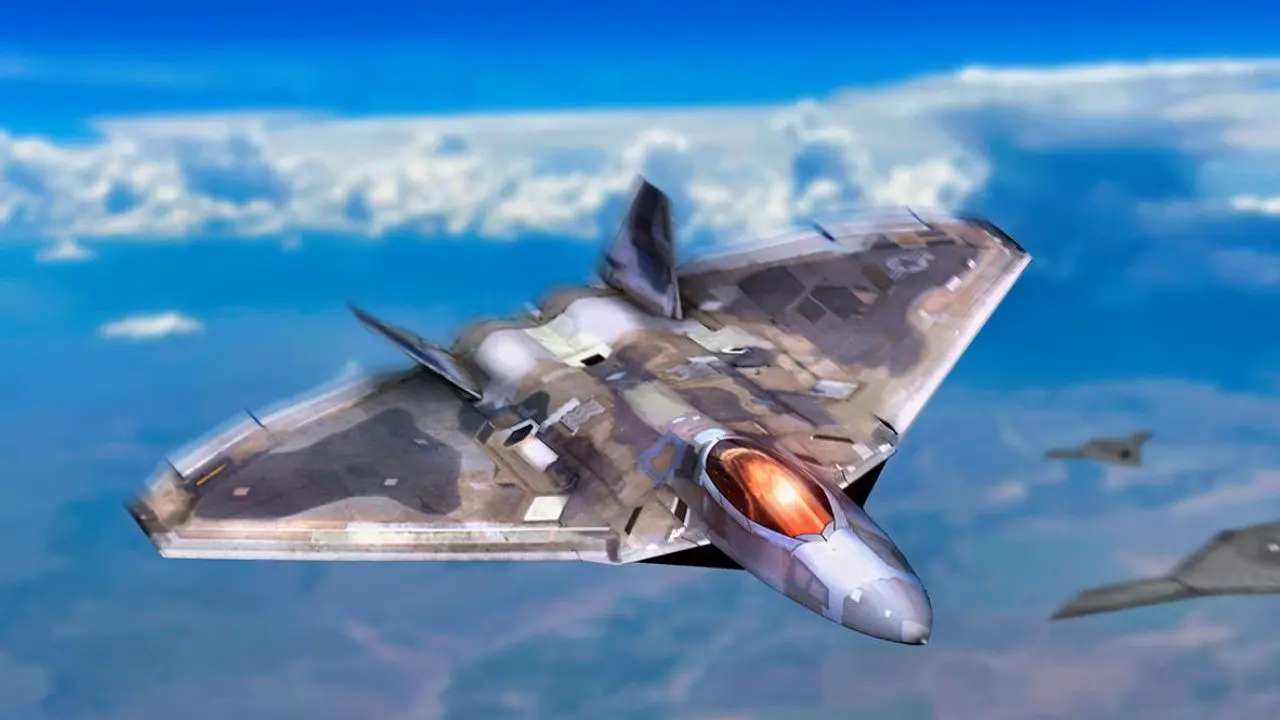Summary and Key Points: Canceling the Next-Generation Air Dominance (NGAD) fighter program poses strategic risks but also offers cost-saving potential. Unmanned Combat Collaborative Aircraft (CCAs) and advanced upgrades to existing platforms like the F-22 and F-35 could potentially fulfill many of NGAD’s envisioned roles.
-These existing aircraft, enhanced by software, AI, and stealth improvements, might effectively counter future threats without building an entirely new sixth-generation fighter.
-However, critics argue that abandoning NGAD could compromise future air superiority, especially given the rise of sophisticated adversaries.
-The key debate centers on whether upgraded fifth-gen fighters combined with CCAs can adequately replace the technological leap intended by NGAD.
The NGAD Debate Rages On
Some might argue that canceling the Next-Generation Air Dominance (NGAD) program entirely might not be too perilous or irresponsible.
Many significant factors threaten the program. Discussion deterring the NGAD development include unmanned systems that can increasingly perform many of its needed missions, and innovations uncovered during its development could arguably, in many cases, be woven into the F-22 and F-35.
This technology allocation remains a pressing and complex question, as many cite the merits of building a new generation of paradigm-changing manned stealth fighter jets.
Yet, others see massive cost savings in accomplishing its intended mission requirements without developing a new 6th-gen fleet.
A World Without NGAD
Wiping out development on a new fleet of 6th-gen stealth aircraft might create challenges for the country to be tactically and technologically sufficient to meet evolving threats from Russia and China for many key reasons.
The Pentagon has already seen the utility and added value of building attritable, low-cost unmanned Combat Collaborative Aircraft platforms that can perform a wide range of critical missions without placing pilots at risk.
CCAs, as they are called, have been envisioned as part of a 6th-generation “family” of systems designed to be manufacturable at scale, attritable, and capable of performing a wide range of critical missions such as forward surveillance or attack.
CCAs could also, in theory, be stealthy as needed and produced in large quantities to blanket an area with surveillance, test enemy air defenses, or operate as forward-targeting nodes within a dispersed networked combat theater.
Upgraded F-22 & F-35
Instead of a manned 6th-gen NGAD platform performing command and control and operating the CCA “family of systems,” some likely argue that an upgraded F-35 or F-22 could not do the same thing. An aerial host platform with long-range sensors and networking capability could operate at stand-off ranges and direct CCA operations as needed.
There will also quite possibly be less dogfighting in future wars due to the vastly extended ranges now achieved by high-fidelity sensors and precision weaponry.
The F-35 has already shown that it can destroy 4th-generation aircraft from ranges where it cannot itself be detected.
Therefore, there is an argument that there may be a less pressing need for a manned stealth fighter capable of close-in dogfighting capability as new technologies continue to obviate the need for fighters to be close to attack. Speed and maneuverability, which a manned 6th-gen would likely bring to the equation in an unprecedented way, would still prove critical when it comes to attacking enemy air defenses and establishing air superiority in a highly contested environment.
At the same time, many of the breakthrough innovations expected to be woven into 6th-generation fighters will come in mission systems, AI-enabled computing, software, and weapons integration. This means paradigm-changing capability can potentially be added without needing to fully design a new aircraft; F-22s and F-35s, for example, have already shown they can become almost entirely different aircraft through software upgrades, weapons interface enhancements, and new generations of sensing and targeting.
There are even ways to significantly enhance an aircraft’s stealth properties without changing the fuselage’s fundamental structural configuration. There will likely be many breakthroughs in thermal management, engine quieting technology, and new radar-absorbing composite materials.
Why the Air Force Needs NGAD: The Nightmare Scenario Is No NGAD
All this being considered, industry images and available renderings of a new, stealthier 6th-generation fighter jet and enterprising technologies being worked on for a new generation of stealth fighters suggest that canceling NGAD may imperil the future of US air superiority.
With manned platforms performing command and control at safer distances, CCAs could penetrate and attack enemy air defenses, conduct surveillance and targeting missions while under enemy fire, and gather time-sensitive intelligence on enemy movements and positioning. New generations of AI, sensing, weapons, targeting, and data transmission can all be achieved with CCAs supporting upgraded manned F-35s and F-22s.
The concept would be to actualize the NGAD “family-of-systems” manned-unmanned teaming vision and a world of possibility without building and deploying a manned 6th-gen jet.
Can the same technological breakthroughs and operational objectives be achieved this way? Some argue that the same level of sophistication, tactical prowess, and breakthrough technology can be achieved using existing 5th-gen aircraft and CCAs.
About the Author: Kris Osborn
Kris Osborn is the Military Technology Editor of 19FortyFive and President of Warrior Maven – Center for Military Modernization. Osborn previously served at the Pentagon as a highly qualified expert in the Office of the Assistant Secretary of the Army—Acquisition, Logistics & Technology. Osborn has also worked as an anchor and on-air military specialist at national TV networks. He has appeared as a guest military expert on Fox News, MSNBC, The Military Channel, and The History Channel. He also has a Masters Degree in Comparative Literature from Columbia University

